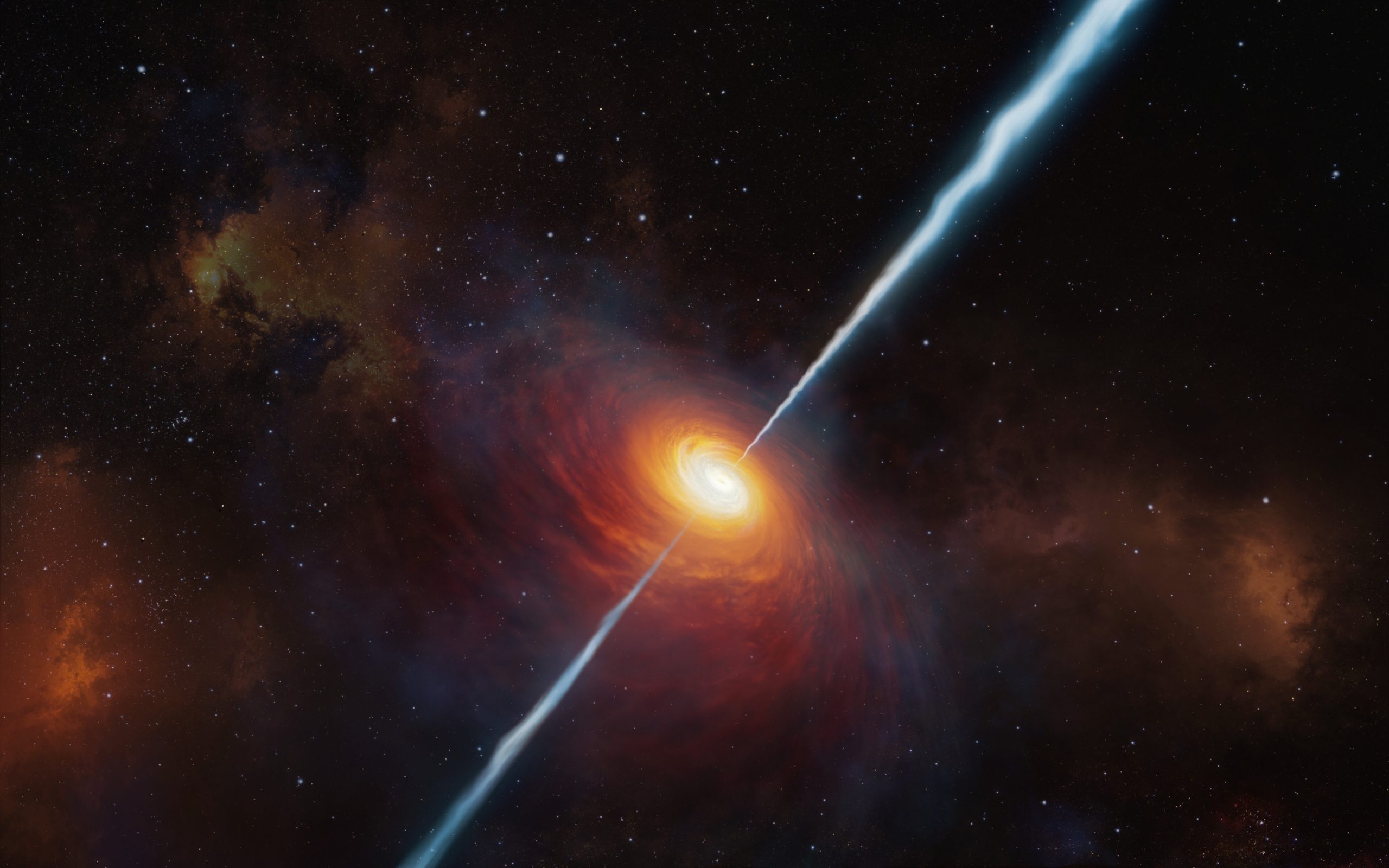Astronomers Discover the Most Distant Radio-loud Quasar Currently Known
Maunakea, Hawaii – An international team of astronomers has pinpointed the most distant radio-bright quasar known so far.
Using various telescopes around the world, including W. M. Keck Observatory on Maunakea in Hawaii, the research team led by the Max Planck Institute for Astronomy and the European Southern Observatory has discovered the quasar, named P172+18, dates back to when the universe was just 780 million years old – about 100 million years earlier than the previous record holder.
The study is published in The Astrophysical Journal.
Based on high-precision observations from several infrared telescopes, including data captured using Keck Observatory’s Near Infrared Echellette Spectrograph (NIRES), the researchers calculated the quasar’s distance at a redshift of z = 6.82. The data also revealed that P172+18 is one of the fastest-growing supermassive black holes known to date, emitting about 580 times as much energy as the entire Milky Way.

Quasars are among the most luminous objects in the universe, powered by supermassive black holes feeding on material at the centers of distant galaxies. Only 10 percent of known quasars are radio-loud, meaning that they shine exceptionally bright at radio frequencies. Only three radio-loud quasars with redshifts of z = 6 or more were known, until now.
Such distant radio-loud quasars are essential for studying the formation and evolution of massive galaxies and black holes in the young universe.
Learn more:
ABOUT NIRES
The Near Infrared Echellette Spectrograph (NIRES) is a prism cross-dispersed near-infrared spectrograph built at the California Institute of Technology by a team led by Chief Instrument Scientist Keith Matthews and Prof. Tom Soifer. Commissioned in 2018, NIRES covers a large wavelength range at moderate spectral resolution for use on the Keck II telescope and observes extremely faint red objects found with the Spitzer and WISE infrared space telescopes, as well as brown dwarfs, high-redshift galaxies, and quasars. Support for this technology was generously provided by the Mt. Cuba Astronomical Foundation.
ABOUT W. M. KECK OBSERVATORY
The W. M. Keck Observatory telescopes are among the most scientifically productive on Earth. The two 10-meter optical/infrared telescopes atop Maunakea on the Island of Hawaiʻi feature a suite of advanced instruments including imagers, multi-object spectrographs, high-resolution spectrographs, integral-field spectrometers, and world-leading laser guide star adaptive optics systems. Some of the data presented herein were obtained at Keck Observatory, which is a private 501(c) 3 non-profit organization operated as a scientific partnership among the California Institute of Technology, the University of California, and the National Aeronautics and Space Administration. The Observatory was made possible by the generous financial support of the W. M. Keck Foundation. The authors wish to recognize and acknowledge the very significant cultural role and reverence that the summit of Maunakea has always had within the Native Hawaiian community. We are most fortunate to have the opportunity to conduct observations from this mountain.


